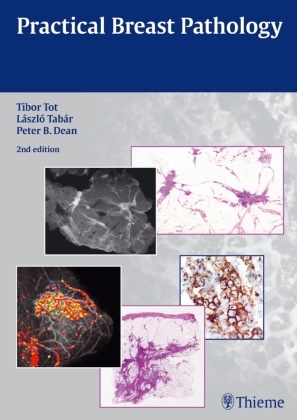Read more
All the information needed for successful diagnosis and management of breast carcinoma
Focused on a modern, interdisciplinary approach to diagnosing and managing diseases of the breast, this concise book builds on the high standard set in the previous edition. It provides a complete foundation in the basic principles, radiologic appearance and underlying pathology of breast disease, without overwhelming non-pathologist members of the team with excessive detail. For effective communication at every level, Practical Breast Pathology, Second Edition provides the clear information, case examples and superb illustrations that make it an ideal clinical problem solver.
Special features of the second edition:
- High-quality examples of modern multimodality radiology (digital mammography, ultrasound and magnetic resonance imaging) correlated with large-format 2D and 3D histologic slides- New findings on such clinically important topics as the lobar nature of breast carcinoma, multifocality, diffuse carcinomas and extent of disease, concept of the sick lobe and more- Introduction of the molecular classification of invasive breast cancer- Discussion of prognostic and predictive factors in breast carcinoma, such as hormone receptors and HER2 status- Updates on preoperative diagnosis, including intact biopsy and radiologic assessment of the extent and distribution of lesions
Enriched with new information and stunning illustrations in every chapter, Practical Breast Pathology, Second Edition is a key link in the exchange between pathologists, radiologists, oncologists and breast surgeons, as well as residents and trainees. It provides an essential framework for understanding the mammographic-pathologic correlation, leading to increased cooperation among clinical team members and significantly improved outcomes for patients.
List of contents
1. Normal Breast Tissue or Fibrocystic Change?
2. General Morphology of Breast Lesions
3. Hyperplastic Changes with and without Atypia
4. Ductal Carcinoma In Situ
5. The Most Common Types of Invasive Breast Carcinoma
6. The Most Common Benign Lesions and their Borderline and Malignant Counterparts
7. Fine-Needle Aspiration or Core Biopsy: A Preoperative Diagnostic Algorithm
8. The Postoperative Workup
9. Assessment of the Most Important Prognostic Parameters
10. Case Reports
About the author
Professor, Dept. of Diagnostic Radiology, University of Turku, Finland; Visiting Professor, Brigham and Womens Hospital, Harvard Medical School, Boston, MA, USA
Summary
All the information needed for successful diagnosis and management of breast carcinomaFocused on a modern, interdisciplinary approach to diagnosing and managing diseases of the breast, this concise book builds on the high standard set in the previous edition. It provides a complete foundation in the basic principles, radiologic appearance and underlying pathology of breast disease, without overwhelming non-pathologist members of the team with excessive detail. For effective communication at every level, Practical Breast Pathology, Second Edition provides the clear information, case examples and superb illustrations that make it an ideal clinical problem solver.Special features of the second edition:High-quality examples of modern multimodality radiology (digital mammography, ultrasound and magnetic resonance imaging) correlated with large-format 2D and 3D histologic slides New findings on such clinically important topics as the lobar nature of breast carcinoma, multifocality, diffuse carcinomas and extent of disease, concept of the sick lobe and more Introduction of the molecular classification of invasive breast cancer Discussion of prognostic and predictive factors in breast carcinoma, such as hormone receptors and HER2 status Updates on preoperative diagnosis, including intact biopsy and radiologic assessment of the extent and distribution of lesionsEnriched with new information and stunning illustrations in every chapter, Practical Breast Pathology, Second Edition is a key link in the exchange between pathologists, radiologists, oncologists and breast surgeons, as well as residents and trainees. It provides an essential framework for understanding the mammographic-pathologic correlation, leading to increased cooperation among clinical team members and significantly improved outcomes for patients.

